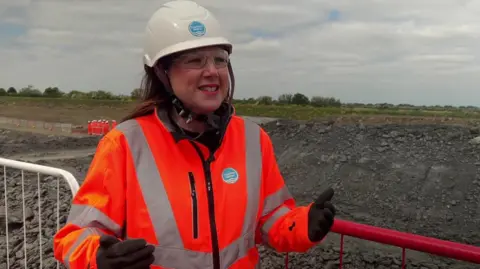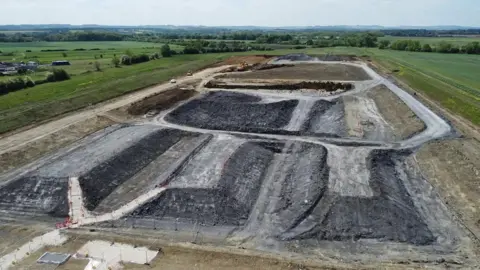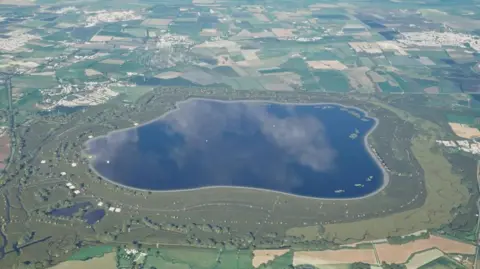Testing the boundaries for planned giant reservoir
 BBC
BBCEngineers are testing newly built embankments that could form part of one of the UK's largest reservoirs, serving London and south-east England.
The £2.2bn South East Strategic Reservoir Option (SESRO), near Abingdon, Oxfordshire, is a Thames Water project to cope with increasing demand and climate change.
It has attracted government backing, but also criticism from councils and environmentalists ahead of an expected planning application in 2026.
At the site near Steventon, compacted clay has been formed into 3m (10ft) walls to test ways of containing up to 150 billion litres of water.
The site feels vast as a small group of us, clad in bright orange PPE and hard hats, view the current clay compaction tests.
The statistics being reeled out on Thames Water's tour back up the scale of the project.
SESRO would cover about 7 sq km (2.7 sq miles), stretching as far as the eye can see as we look north.

Head of engagement, land and consents Leonie Dubois is adamant about the ever-increasing need.
"We know through climate change, we've had the hottest May 1st on record and the driest March on record," she points out.
"We know through population growth and we also know through our desire to have less impact on the environment that our water resources are under pressure."
In January, Chancellor Rachel Reeves indicated government support for the Abingdon reservoir.
However, it has met with environmental objections from the Campaign to Protect Rural England as well as Oxfordshire County Council and Vale of White Horse District Council.
SESRO will be a non-impounding reservoir, allowing water flow, which will have embankments up to 25m (80 feet) high.
The construction team on the tour are keen for us to imagine tree-planted gentle slopes rather than sheer walls.
The current work is testing small-scale versions of those embankments.
But from where I'm currently standing, in the hole where they extracted the Kimmeridge clay, it feels enormous.
 Thames Water
Thames Water"We've dug the clay out of the ground and we've essentially squeezed it to understand how it performs under pressure," explains Leonie Dubois.
She says she is keen to address local opposition, which has focused on environmental impacts.
"We understand that when infrastructure is developed close to communities they have concerns which is why I have a dedicated team of engagement people here every day talking to customers understanding what their concerns are.
"We're also very keen to hear what people want from this site. This will be here for hundreds of years. It will be something close to communities, so what would they like?"
Thames Water and partners Southern Water and Affinity Water are hoping the reservoir will come on stream in 2040.
As our guide walks us back up the slope out of the burrow pit, he points out the hundreds of ammonite fossils revealed after millions of years buried deep in the clay.
If the compaction trials prove successful, they will be covered up for centuries more – this time by water.
You can follow BBC Oxfordshire on Facebook, X (Twitter), or Instagram.
